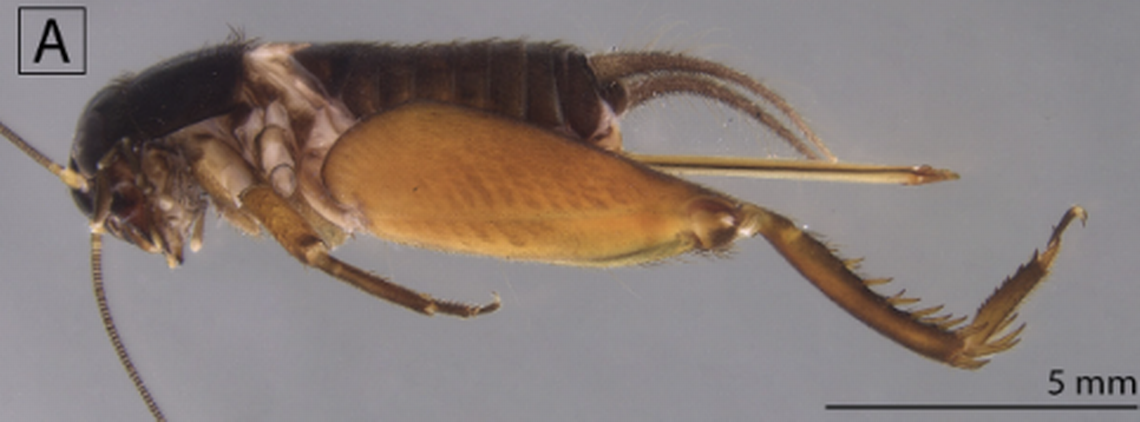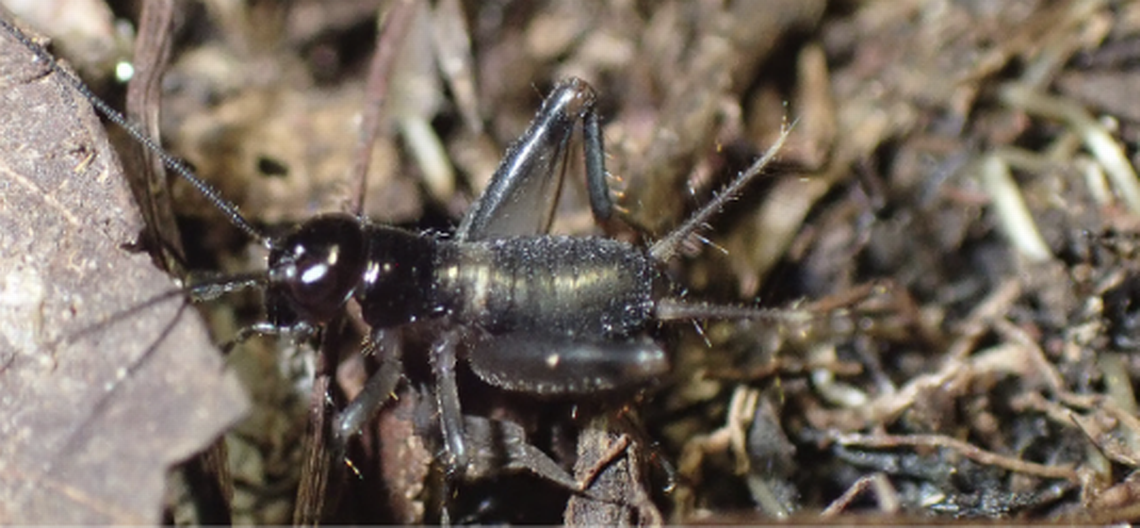Cave-dwelling creature — found in Amazon — can’t make a sound. See ‘unique’ new species
Whether for an awkward silence or on a quiet summer night, there is one animal that can be counted on to fill the void with noise: crickets.
The notoriously loud insects rub parts of their body together to create the well-known “chirp, chirp, chirp.”
However, in a cave deep in the Amazon rainforest, one species of cricket hops around in the dark — in complete silence.
Called Zebragryllus aphonus, the surprisingly discreet cricket was recently discovered as a new species in Canaã dos Carajás, in northern Brazil, according to an April 24 study published in the European Journal of Taxonomy.
The dark brown insect has small stripes running the length of its body and legs, confirming its place in the Zebragryllus genus, named for the “zebra” patterns found on the species, according to the study.

Discover more new species
Thousands of new species are found each year. Here are three of our most eye-catching stories from the past week.
→Volcanic ocean creature — with 'long' legs — discovered in Japan. It's a new species
→'Flat'-headed creature — with multicolored eyes — discovered as new species in China
→Nocturnal creature — a 'rapidly-running' predator — discovered as new species in India
Before this find, all known species of Zebragryllus were known to have stridulatory apparatus on the tegmina, or hind wing, of males, researchers said.
Stridulatory apparatus are a series of ridges on the wings of the crickets that can be rubbed together to create sound, according to Advances in Insect Physiology. They play a crucial role in crickets’ reproductive behaviors.
But when researchers examined the species found in the cave more closely, they saw it was missing these ridges, meaning the crickets would be “incapable of producing sound,” according to the study.
The “unique feature” was matched with a lack of development of the tympana, or internal membrane of the ear, researchers said.
“These two characteristics may be adaptations to the caves in which they were found,” researchers said.

The silent crickets were found in both leaf litter and caves, suggesting researchers caught adaptation in action.
The crickets were found foraging in the leaves during the night, then staying in the caves during the day, according to the study, giving researchers two possible reasons for their silent lifestyle.
Animals of all kinds change physically when they move to a “cave-dwelling life,” according to the study, so the lack of sound-making ridges and hearing may be a complete adaptation for some of the crickets’ life spent in caves.
Or, the cricket may be moving from a life spent primarily outside to one protected by the rocky holes, meaning the adaptation is the beginning of a morphological change in the species until it becomes entirely cave-dwelling, according to the study.
Whether deep in caves or compressed under leaf litter and soil, the environment is dense, making it more difficult for sound to travel from one cricket to another.
“However, we still lack sufficient evidence, and the caves where this species was found are not extensively developed, often less than 10 meters in length,” researchers said. “Thus, only evolutionary studies and descriptions of yet-unknown species within this genus will provide a better understanding of these findings and validate some of these hypotheses.”
Researchers also described a second newly discovered species in the study, Zebragryllus mebengokre, which had the sound-making ridges and hearing membrane developed.
Deep-sea creature — with ‘rectangular’ shape — discovered as new species. Take a look
‘Slender’ sea creature — with ‘razor’-like edge — found in mud. It’s a new species
‘Transparent’ muscular creature found in seaweed beds off Japan. It’s a new species
Clawed forest creature found lurking near temple in India. It’s a ‘holy’ new species
